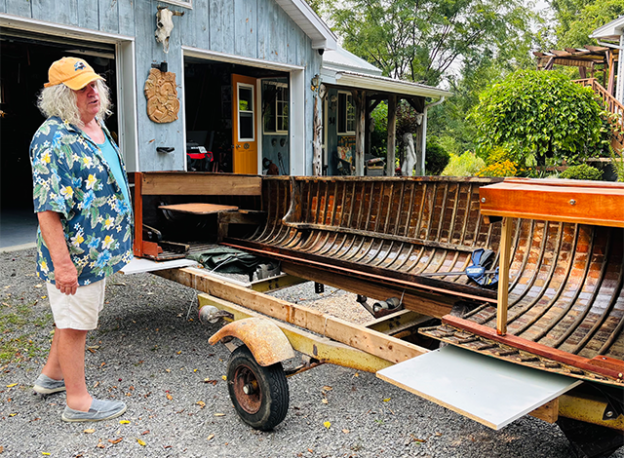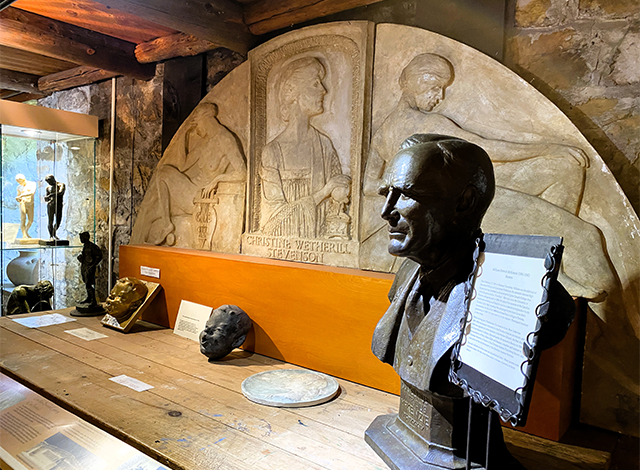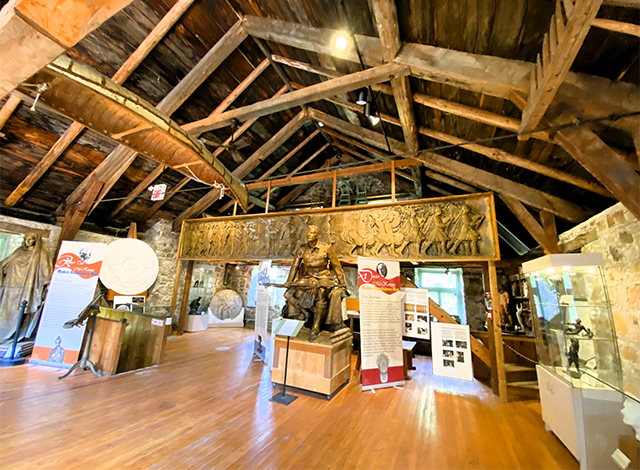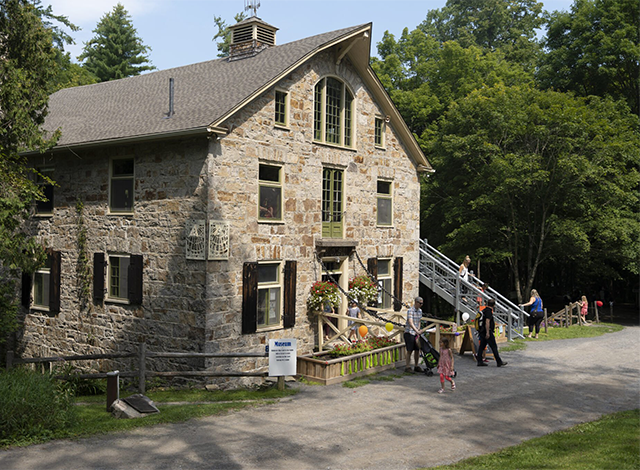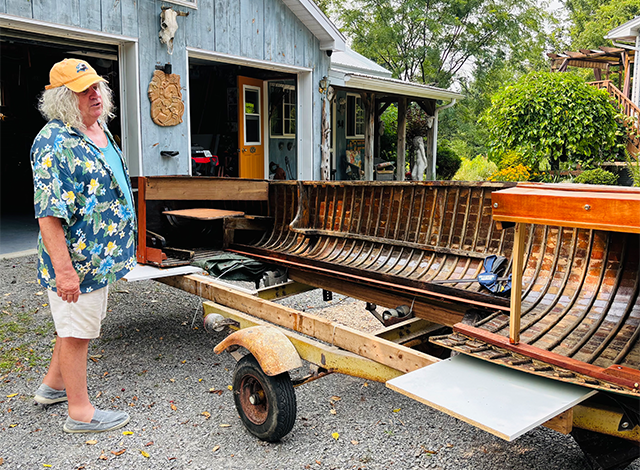HEDDY SOROUR
PORTLAND — Step into The Galley in Portland, and you cannot miss the showstopper. A cantilevered bar that looks like it came straight from a marina dominates the room. That is because it once did.
Installed in 2023, the striking centrepiece is made from a salvaged boat, rescued from a scrapyard fate and reborn as a conversation-starting bar. The man behind it is James Graham, a retired Montague resident with a passion for upcycling, a family legacy of Scottish shipbuilders from Edinburgh, and an eye for turning forgotten vessels into one-of-a-kind furniture.
“It has become a bit of a draw,” says Sean Horsfall, third-generation owner of Lens Cove Marina, home to The Galley. “Even people coming in for the first time, years later comment on it.”
The boat that became The Galley’s signature bar came from the Kawarthas, bound for scrap until one of Horsfall’s employees suggested a friend who might give it a second life. That friend was Graham.
“The Galley bar is actually the only commercial bar I have built,” Graham says. “It’s cantilevered so people can sit at it comfortably.” The design means the countertop is anchored at one end and extends outward without support legs, giving patrons more legroom.
The inspiration came from travels through South America and the Caribbean, where boat bars are a charming fixture rather than a novelty.
“I loved the absurdity of it,” Graham says with a laugh. “You are sitting at a boat in town, not even on the water. It is recycling, it is upcycling, and it is art. People get a kick out of it.”
What sets Graham’s work apart is not just the concept but the craft. He specializes in cedar strip boats, restoring them before giving them new life.
“Cedar strip bars will live a far more charmed life than becoming decaying petunia planters or beach bonfire material,” he says.
His current project involves a cedar strip hull that had been stained black. Graham has already spent more than 150 hours sanding and reconstructing the boat to expose the original white cedar beneath.
“For bar tops and rolling cradles I source fresh cedar from Scouten White Cedar near Numogate,” he says. “Then I laminate, glue, screw and sand until the new pieces flow seamlessly with the original.”
He has now reached what he calls “the exciting part”, or the creative phase. Even the cut-out parts of the boat will not go to waste.
“I cannot bring myself to throw anything away,” he says. “The insides of this boat will become a sign.”
Graham’s creations extend well beyond bars. He has built bookshelves, credenzas and desks from old boats and boat parts.
Take the desk he built for Sirens Boatworks in Merrickville. It began with a forgotten teak swim platform tucked out behind the shop.
“I cannot remember whose idea it was, but we were out back and saw this platform,” says Sirens owner Andrew Lee. “James said he would make something special with it, so I gave it to him.”
Graham, who keeps a boat at Sirens, knew Lee was redecorating his office. He saw more than just a platform. He saw a desk. He paired it with salvaged cruiser rails, shortened just enough to act as guards for office equipment. The final touch was a set of legs from an old drafting table he spotted while driving through Smiths Falls.
“That is the thing with these projects,” Graham says. “The pieces just come and want to be where they want to be. Things I did not think I was going to use just fit. Everything has its place. These projects have a life of their own.”
Graham’s love for woodwork and boats started early. Summers at his family’s Georgian Bay cottage nurtured his curiosity.
“My grandfather had a workshop in the boathouse,” he says. “He encouraged me to build anything I wanted.”
Later, his older brother and brother-in-law passed down carpentry skills. Graham carried that foundation into retirement, trading a long career in IT for work that was more hands-on.
“It is very tactile,” he says. “It is artistic. It is expression. It is something I find joy doing.”
And joy is exactly what shines through in every reclaimed plank, every meticulously sanded cedar strip, and every piece that finds a second life in a place no one expected.
For Graham, these projects are more than furniture. They are functional art that connects to history, craft and imagination. They are proof that with the right vision, a boat destined for the scrap heap can become the centrepiece of a room, sparking conversation and admiration for years to come.

